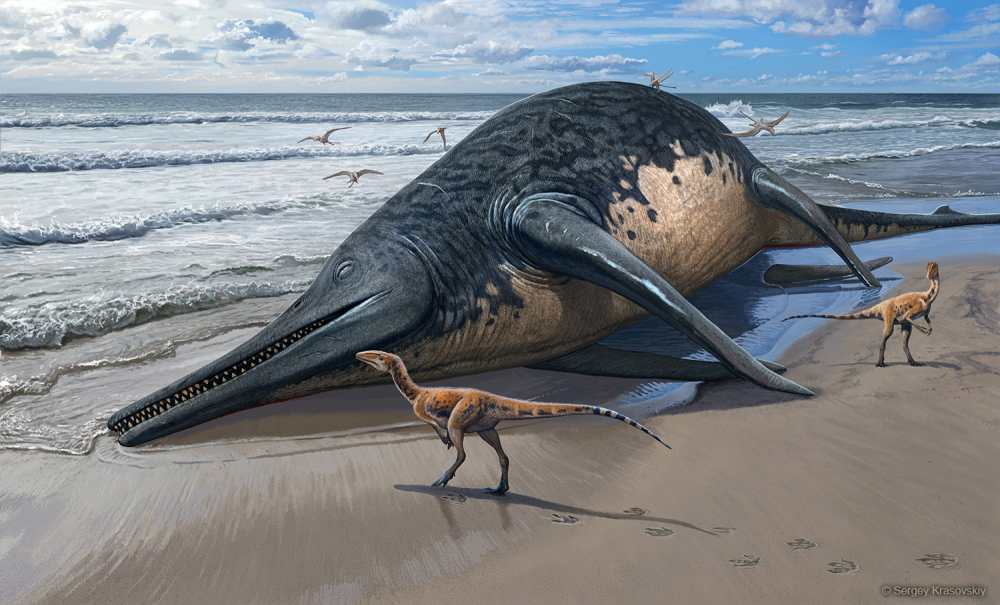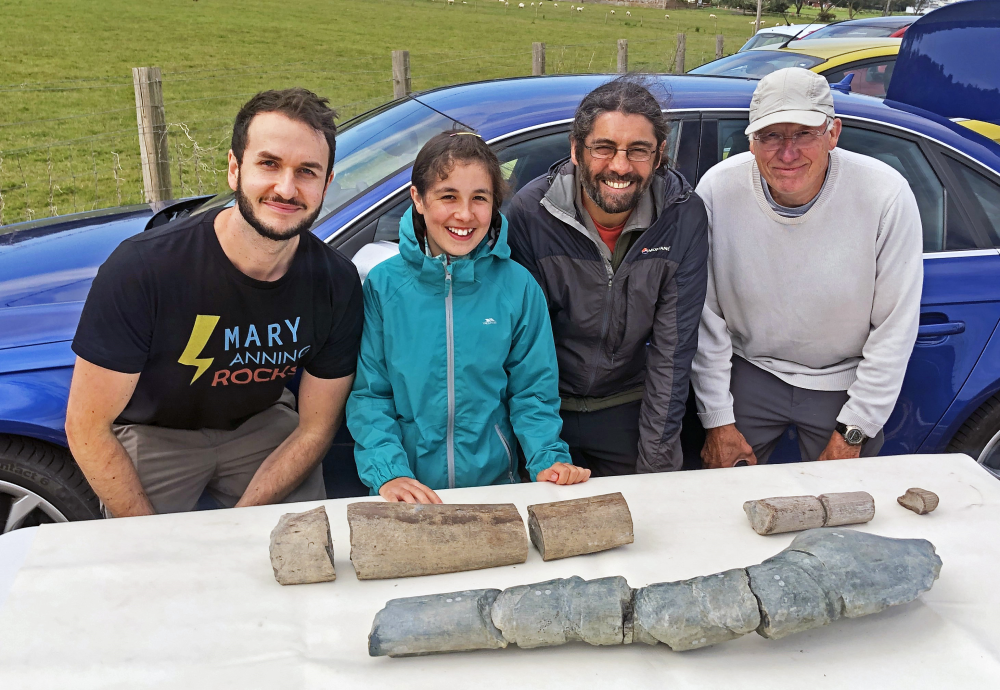The title of largest ever marine reptile may have just been claimed by a new species of ichthyosaur that lived 202 million years ago. Estimations based on discoveries of jaw bones indicate it was around 25 meters (82 feet) in length, making it comparable to today’s blue whales.
The new-to-science species has been named Ichthyotitan severnensis, meaning “giant fish lizard of the Severn.” How it came to be described takes us back to 2020, that real hoot of a year, when father and daughter team Justin and Ruby Reynolds found a fossil jawbone.
They were hunting for fossils along Blue Anchor in Somerset when Ruby, then aged 11, found the first piece, and further finds were added to their collection. They contacted ichthyosaur expert Dr Dean Lomax, of the Rutland Sea Dragon fame, to take a look at what they had found.
As luck would have it, their fossils complemented another discovery from 2016 of a giant jaw bone made by fossil expert Paul de la Salle in Lilstock, not far from where the Reynolds were searching. The extra material gave scientists the information they needed to describe a new prehistoric sea monster.

A dead Ichthyotitan would’ve been one hell of a meal for scavengers.
Image credit: Sergey Krasovskiy
“I was amazed by the find,” said Lomax in a release. “In 2018, my team (including Paul de la Salle) studied and described Paul’s giant jawbone and we had hoped that one day another would come to light. This new specimen is more complete, better preserved, and shows that we now have two of these giant bones (called a surangular) that have a unique shape and structure. I became very excited, to say the least.”
The excitement fuelled a return to the site in search of more pieces, and sure enough, they were rewarded with more fossils. Eventually, they had enough to piece together two examples of the same jaw bone, providing enough information to describe the species, and painting a more complete picture of the enormity of this animal.
The bones date back to a time known as the Rhaetian, towards the end of the Triassic Period around 202 million years ago. This puts it towards the tail-end of gigantic ichthyosaurs’ reign, meaning these giant marine reptiles were among the last of their kind before the Late Triassic global mass extinction event.

Some of the fossil finds with (left to right) Dr Dean Lomax, Ruby Reynolds, Justin Reynolds, and Paul de la Salle.
Image credit: Dr Dean Lomax
The description of the new species is of great academic potential in understanding how Late Triassic ichthyosaurs were able to reach the known biological limits of vertebrates in terms of size. The efforts of de la Salle and the Reynolds have gifted palaeontology some remarkable new specimens to learn from, and there’s every chance there could be more out there to find.
“This research has been ongoing for almost eight years,” concluded Lomax. “It is quite remarkable to think that gigantic, blue whale-sized ichthyosaurs were swimming in the oceans around what was the UK during the Triassic Period. These jawbones provide tantalising evidence that perhaps one day a complete skull or skeleton of one of these giants might be found. You never know.”
The study is published in the journal PLOS ONE.
Source Link: 202-Million-Year-Old Ichthyosaur May Be The World's Largest Marine Reptile